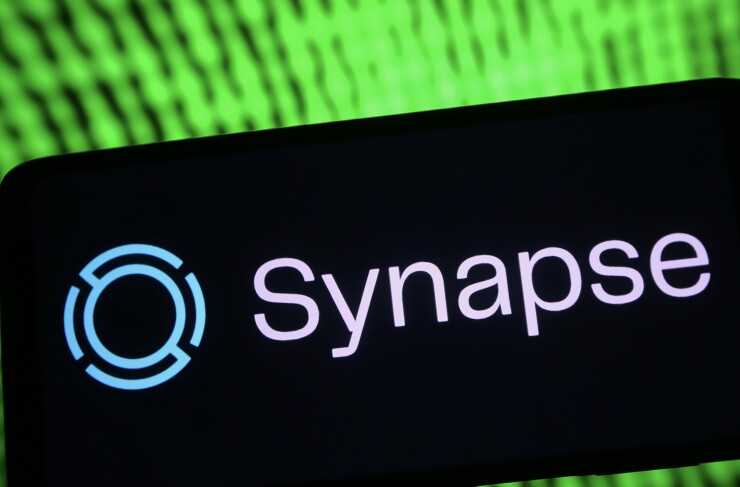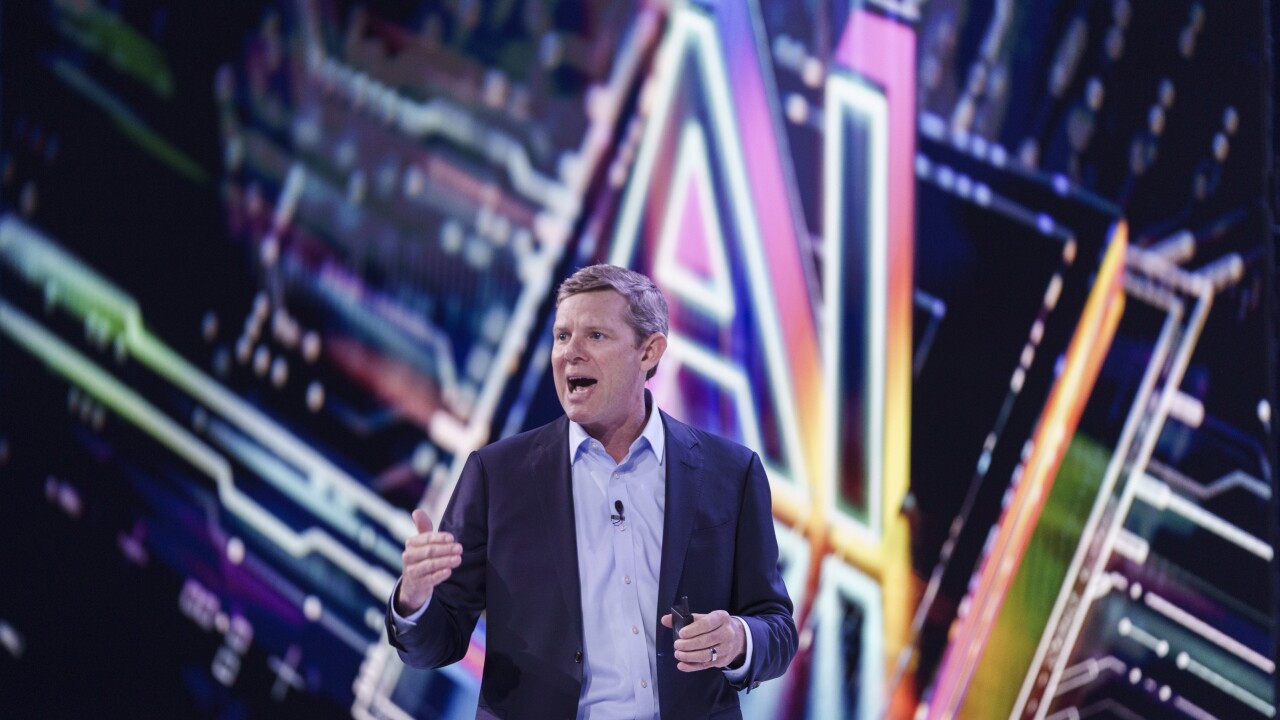
Artem Fedyaev, the CEO and co-founder of challenger bank GrabrFi, experienced this turmoil firsthand. In 2021 he tried to launch GrabrFi as an offshoot of Grabr, the peer-to-peer marketplace he built in 2015. GrabrFi is meant for freelancers and remote workers who live outside of the U.S. but receive income from U.S.-based companies. It lets users from 28 countries open checking accounts in the U.S., where they can receive their salaries in U.S. dollars.
In the three years since, he has integrated with three different middleware providers, including Synapse, and rotated between several prospective sponsor banks in his quest to bring his idea to market.
Fedyaev's account of his experience highlights both the flaws of and the opportunities in the banking-as-a-service, or BaaS, middleware space. On one hand, handing over some control to middleware firms brought complications and opacity. Middleware providers are, broadly speaking, vendors that connect banks to fintechs and provide matchmaking services and technology. It often took months longer than expected for GrabrFi to integrate with a new provider.
On the other hand, the company's current provider, Synctera, was instrumental in linking GrabrFi to a partner bank relationship that has thus far proceeded smoothly. In theory, middleware firms that have multiple partner banks can help fintech clients secure more than one BaaS sponsor. This was once viewed as a luxury but may be an existential necessity as
GrabrFi's story also represents an evolving mindset among financial services startups.
"It used to be that fintechs looking for a bank partner prioritized speed and flexibility, where the faster they could go to market the better, and the more flexibility the bank had on terms the better," said Jonah Crane, partner at Klaros Group. Now, "people are being choosy about which banks they work with."
The bankruptcy of fintech middleware provider Synapse has left thousands of customers unable to access their savings, with seemingly no one empowered to put it back in their hands. Regulators and lawmakers need to do something about it, but first they need to talk about it.

When conceiving GrabrFi, Fedyaev and his team estimated there were 120 million people in other countries working across borders for U.S. companies and potentially receiving their salaries in U.S. dollars. Through his network of investors, Fedyaev spoke with several potential partner banks in 2021 about his idea for a challenger bank.
"They all said the same thing — this was a huge use case and a big market, but it was too risky on the KYC [know-your-customer] side because it is international and digitized," he said.
Their confirmation that the market was there encouraged him to keep going. The next step was speaking with BaaS middleware providers, most of whom echoed the banks' worries about the potential for fraud, money laundering and other risks.
"I understand now, but back then I was arguing with them," said Fedyaev.
GrabrFi did make headway with one firm, Treasury Prime. Fedyaev says he spent four months building GrabrFi using technology and documentation provided by Treasury Prime, and had a sponsor bank willing to hold GrabrFi deposits. But a week before launch in August of 2021, the sponsor bank named a condition that GrabrFi saw as a deal-breaker: 90% of the accounts must be reserved for U.S. citizens and residents.
"For us it was no deal," said Fedyaev. "There was too much competition in the U.S. Our vision was to go to the global space immediately."
In a statement, Treasury Prime said that it "has always required that fintech customers have a
When Fedyaev revived conversations with BaaS providers who had rejected GrabrFi several months prior, he found more willingness.
"In this industry, things change fast," said Fedyaev. "Everyone was looking for growth."
Fedyaev alleges that Synapse promised GrabrFi that it could launch in three to four months. Instead, Fedyaev says that GrabrFi spent more than a year integrating technology, waiting for compliance approvals and conducting due diligence, which included composing disclosures, terms of use and know-your-customer programs for each country in which GrabrFi wanted to launch.
"At the end of day, it's a good thing," said Fedyaev. "Compliance is very important."
But in his experience, some of the features that Synapse had promised it could support were still in production, such as the ability for users to transfer money via SWIFT.
Synapse did not respond to a request for comment. The company
"It's how many of the BaaS providers speak. 'Do you have this?' The answer is 'yes' when they try to sell you," said Fedyaev. "You sign the contract and realize they are still building it."
At the same time, Fedyaev acknowledges many of these companies are startups themselves and may have underestimated the demand for their services.
The problems with Synapse persisted. A week before GrabrFi was supposed to go live in July 2022, Fedyaev found out through Synapse that his original sponsor bank was no longer taking on new programs and that GrabrFi would have to pivot to another one. Integrating with a second bank took a few more months.
"Because we invested so much we kept waiting, paying salaries, pushing marketing campaigns further and further, telling investors we're almost there," said Fedyaev. "Everyone is getting impatient."
He said he had no contact with the banks in question, or the issuer of GrabrFi's debit card.
"It's always a black box," he said. "When you try to contact people through LinkedIn they don't respond because they don't know who you are."
Carey Ransom, the managing director of BankTech Ventures, a venture capital fund, also has firsthand experience with BaaS. He was a co-founder of consumer lender Payoff, now Happy Money, and the chief operating officer of environmentally focused challenger bank
"I've been dubious of middleware companies sitting in between fintech-bank partnerships," said Ransom.
In his prior life as a fintech executive, "We had to be confident we knew who was opening accounts," he said. "The middleware companies have created this obfuscation on both sides and created risk that some of the fintechs don't even realize."
GrabrFi launched in January of 2023. Fedyaev said it accrued tens of thousands of customers in the first year. But the troubles had taken their toll. A shareholder that Fedyaev trusted introduced him to Peter Hazlehurst, co-founder and CEO of Synctera, another middleware provider, in May. Fedyaev decided to migrate.
"I liked that they didn't push me to sign anything," said Fedyaev. "They were transparent about what features they had and didn't have." Synctera also mandated that a prospective sponsor bank be comfortable with GrabrFi before it would sign the contract.
Fedyaev flew to Tulsa, Oklahoma, to meet with the $1.7 billion-asset Regent Bank in person — something the bank prefers, said Steve Baker, the chief innovation officer at Regent.
"Because of our experience, it wasn't them doing due diligence on us and us saying 'please work with us,'" said Fedyaev. "We wanted to make sure that if we were doing this for the third time, we could scale for the long term and there would be no surprises a week before launch."
He posed questions such as, "If I sign up a million customers in Argentina next year, will regulators come for you?" and "Will you ask me to put a quota on how many accounts we can have?"
GrabrFi relaunched in January 2024 with Synctera and Regent. Migration overall took longer than the three to four months estimated — "They all say this," said Fedyaev — and spanned about seven months from GrabrFi pitching its use case to Synctera. But half of that time was spent on meeting the bank and doing preparatory work to begin the integration, said Fedyaev. GrabrFi uses a combination of compliance tools from Synctera and vendors it found independently, such as Stripe Identity for international know-your-customer checks. All of its compliance policies are vetted by Regent Bank.
On its end, Regent has been active in the BaaS space for 20 months, with about 15 partners, most of whom came through Synctera referrals.
Fedyaev appreciates the direct line he gets to Regent. For instance, if Regent is suspicious of a transaction or account, "They contact us immediately," he said. "We can make a change within 24 hours."
He also likes the flexibility of the BaaS arrangement. Although neither Regent nor Synctera offer remittance, they were open to GrabrFi finding a third party to build such a feature, subject to their approval. Fedyaev says remittance will launch this summer.
Synctera's model is the direction in which middleware is headed, predicts Crane.
"They are the facilitator, not the primary counterparty," he said. "Ultimately, [fintechs] will have a direct relationship with the bank and the middleware provider is an important technology layer."
Nevertheless, a looming challenge on Crane's radar is how these parties will come together to get small fintechs off the ground.
"As the bar is raised for how to run these partnerships in a compliant way, it gets harder to see how it's going to work for small fintechs," said Crane. "Banks want established, scaled programs. It will be harder for new fintechs to find a home."





